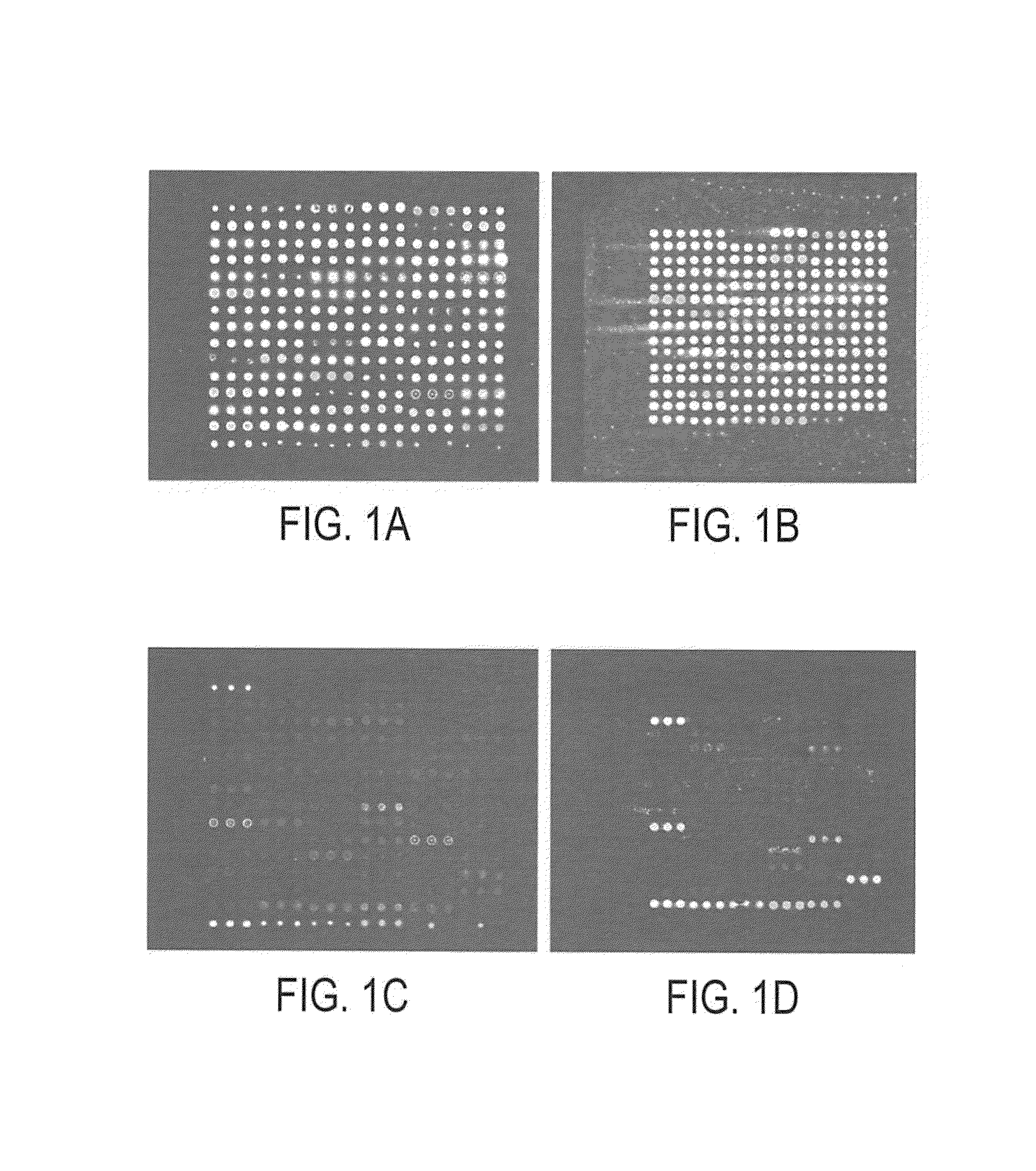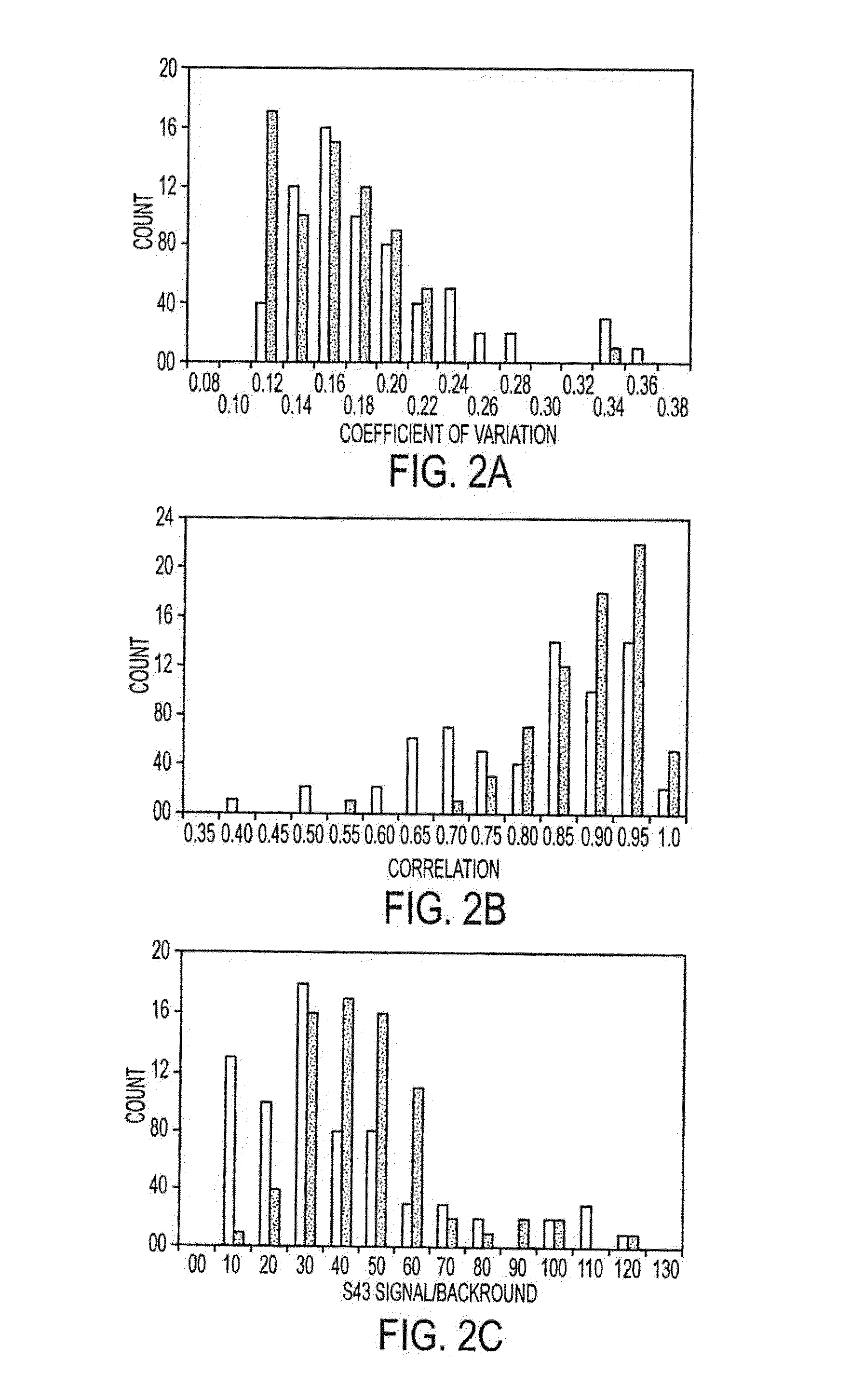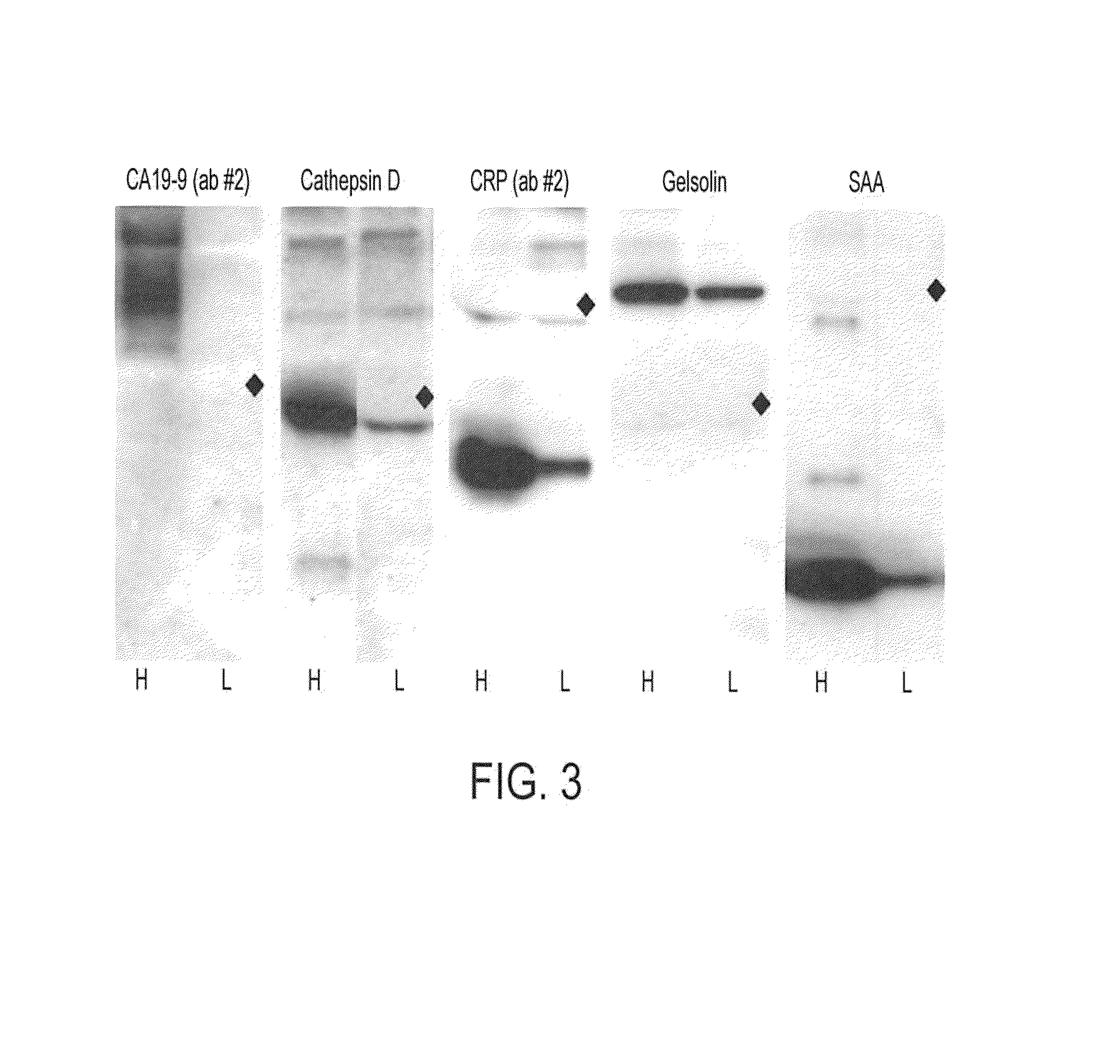Biomarkers for pancreatic cancer and diagnostic methods
a pancreatic cancer and biomarker technology, applied in the field of molecular biology and medicine, can solve the problems of high cost, significant interpretation expertise, and insufficient performance of single marker tests, and achieve the effect of improving performan
- Summary
- Abstract
- Description
- Claims
- Application Information
AI Technical Summary
Benefits of technology
Problems solved by technology
Method used
Image
Examples
example 1
[0158]Serum samples were assembled from three sites. At Evanston Northwestern Healthcare (ENH, Evanston, Ill.), serum samples were collected from patients with pancreatic adenocarcinoma (stage I to stage IV), other gastro-intestinal malignancies (such as colon cancer, duodenal or esophageal cancer), or benign gastro-intestinal diseases (such as ampullary adenoma, pancreatitis, cystadenoma, pseudocyst or diverticulosis). The samples were collected prior to any invasive procedures, and the patient diagnoses were confirmed after subsequent procedures. Control samples also were collected at ENH from high-risk individuals from pancreatic cancer prone families undergoing surveillance with Endoscopic Ultrasound (EUS) or Endoscopic Retrograde Cholangiopancreatography (ERCP). The control subjects had no pancreatic lesions, and serum samples were collected using the same procedure as for the other patients at ENH. Additional samples from pancreatic cancer patients and healthy con...
example 2
Antibodies and ELISA
[0161]Antibodies were purchased from various sources. Table 1 shows the complete list of antibodies used, and performance characteristics. The average CVs, correlations, and average S / Bs (543 channel only) were calculated. The “correlation overlap” column refers to the number of samples that both gave measurable data in both sets one and two (out of 89 possible) or in both sets three and four (out of 138 possible). The “Control S / B / ” column gives the average S / B of each antibody in the negative control experiments, in which unlabeled sera were incubated on the arrays.
[0162]Antibodies that were supplied in ascites fluid, culture supernatant or antisera were purified using Protein A beads (Affi-gel Protein A MAPS kit, Bio-Rad) according to the manufacturer's protocol. The antibodies were prepared at concentrations of 200-2000 μg / ml (most at 500 μg / ml) in 10.1 mM Na2HPO4, 1.8 mM KH2PO4, 137 mM NaCl, 2.7 mM KCl, pH 7.5 (1×PBS) containing 0.02% NaN3. The integrity of ...
example 3
Fabrication of Antibody Microarray
[0163]Microarrays were prepared as previously described by the inventor. Zhou, H., Bouwman, K., Schotanus, M., Verweij, C., Marrero, J. A., Dillon, D., Costa, J., Lizardi, P. M., and Haab, B. B. Two-color, rolling-circle amplification on antibody microarrays for sensitive, multiplexed serum-protein measurements. Genome Biology, 5: R28, 2004. The antibody solutions were assembled in polypropylene 384-well microtiter plates (MJ Research), using 20 μl in each well. A piezoelectric non-contact printer (Biochip Arrayer, PerkinElmer Life Sciences) spotted approximately 350 μl of each antibody solution on the surfaces of either hydrogel-coated (OptArray slides, Accelr8 Technology Corp.) or ultra-thin-nitrocellulose-coated microscope slides (PATH slides, GenTel Biosurfaces). Twelve identical arrays were printed on each slide, with each array consisting of 88-90 antibodies and control proteins spotted in triplicate in an 18×15 array. The printed hydrogel sli...
PUM
| Property | Measurement | Unit |
|---|---|---|
| threshold | aaaaa | aaaaa |
| molecular weight | aaaaa | aaaaa |
| concentrations | aaaaa | aaaaa |
Abstract
Description
Claims
Application Information
 Login to View More
Login to View More - R&D
- Intellectual Property
- Life Sciences
- Materials
- Tech Scout
- Unparalleled Data Quality
- Higher Quality Content
- 60% Fewer Hallucinations
Browse by: Latest US Patents, China's latest patents, Technical Efficacy Thesaurus, Application Domain, Technology Topic, Popular Technical Reports.
© 2025 PatSnap. All rights reserved.Legal|Privacy policy|Modern Slavery Act Transparency Statement|Sitemap|About US| Contact US: help@patsnap.com



